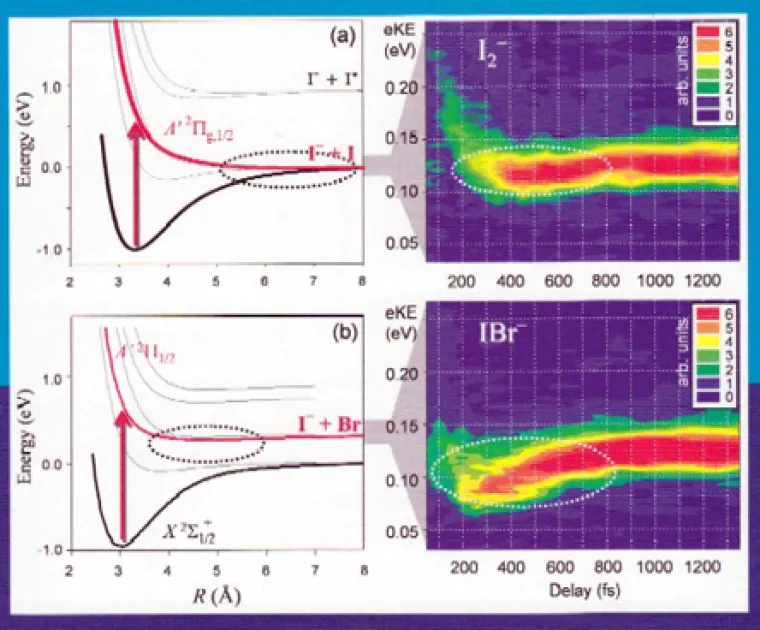Professor
Degrees and Appointments
- M.S. (Physics & Math), 1992, Moscow Institute of Physics and Technology
- Ph.D. (Chemistry), 1996, University of Southern California
- Postdoctoral Fellow, 1996-1999, JILA, University of Colorado, Boulder
Field of Study: Physical Chemistry
Awards and Honors
- Distinguished Alumni, Chemistry, Univ. of Southern California (2019)
- Fellow of the American Physical Society (elected 2017)
- Distinguished Career Teaching Award, College of Science (2016)
- Innovation in Teaching Award, College of Science (2013)
- Weed Endowed Chair (2011)
- Camille Dreyfus Teacher-Scholar Award (2004)
- Packard Fellowship for Science and Engineering (2002)
- NSF CAREER Award (2002)
- Beckman Young Investigator Award (2002)
- Research Innovation Award, Research Corporation (2000)
Research Specialties: Chemical Physics, Chemical Reaction Dynamics/Kinetics/Interactions, Instrument Development, Spectroscopy/Molecular Structure, Theory Modeling and Simulation, Ultrafast Spectroscopy
Our research focuses on experimental probes of the electronic structure of atomic, molecular and cluster anions, as well as the corresponding neutral species. Our experiments offer an in-depth look at molecular bonding motifs and reactivity, made possible by photoelectron imaging spectroscopy.

Principal research directions:
- Photoelectron imaging spectroscopy of negative ions
- Characterization of exotic anions and neutral reactive intermediates
- Time-resolved photoelectron imaging
- Cluster chemistry and interactions of electrons with solvent molecules
Our objective is to attain a molecular-level view of the fundamental driving force of chemistry: the electronic structure transformations in reactions and intermolecular interactions. As chemical bonding is controlled by electrons, it is their behavior that determines the molecular potential energy landscapes and ultimately controls the outcomes of reactions.


We especially emphasize the coherence of delocalized wavefunctions and corresponding charge distributions. Coherence is a cornerstone of charge transport phenomena, as it controls unabated charge flow across a molecule or a device. We target coherence at the molecular level, by observing and characterizing a variety of interference effects in negative-ion photodetachment.

Negative ions are important in many natural and technological processes and their properties are vital to understanding chemistry of solutions, as well as bio- and environmental chemistry. Many of the anions targeted in our research are selected not only for their fundamental properties, but also the potential roles they play in chemistry of interstellar medium and other extraterrestrial environments. We are particularly interested in mechanisms of molecular-level interactions controlling the outcomes of chemical reactions, including those generally described as solvent-enabled and solvent-controlled chemistry.
Photoelectron imaging has become a new standard of anion photoelectron spectroscopy. From its inception, our group has been at the forefront of this rapidly growing field. In particular, we focus considerable effort on developing the utility of photoelectron imaging in obtaining and understanding experimental "signatures" of electron orbitals. Our work capitalizes on the advantage of photoelectron imaging over traditional energy-domain photoelectron spectroscopy in regards to the insight it provides into the properties of electronic wavefunctions.

Our experimental efforts serve as a catalyst for the developments in theory of angular distributions in anion photodetachment. Yet, we recognize that photoelectron imaging alone cannot solve all structural and dynamical problems, especially in cases of competing photodissociation, photodetachment and autodetachment pathways. Hence, the experimental techniques employed by our group target both electron emission and anion fragmentation, yielding a more complete picture of negative-ion chemistry.
For full list of publications follow this link
SELECTED REVIEWS AND TUTORIAL PAPERS:
Laboratory-Frame Photoelectron Angular Distributions in Anion Photodetachment: Insight into Electronic Structure and Intermolecular Interactions
A. Sanov, Annu. Rev. Phys. Chem. 65, 341-363 (2014). [PDF]
Photoelectron Imaging as a Quantum Chemistry Visualization Tool
E. R. Grumbling, K. Pichugin, R. Mabbs, and A. Sanov, J. Chem. Educ. 88, 1515-1520 (2011). [PDF]
Photoelectron imaging: an experimental window into electronic structure
R. Mabbs, E. R. Grumbling, K. Pichugin, and A. Sanov, Chem. Soc. Rev. 38, 2169-2177 (2009). [PDF]
Photoelectron imaging of negative ions
A. Sanov and R. Mabbs, Int. Rev. Phys. Chem. 27, 53-85 (2008). [PDF]
Cluster anions: Structure, interactions, and dynamics in the sub-nanoscale regime
A. Sanov and W. C. Lineberger, Phys. Chem. Chem. Phys. 6, 2018-2032 (2004). [PDF]
Photoelectron Imaging of Negative Ions: Atomic Anions to Molecular Clusters
R. Mabbs, E. Surber, and A. Sanov, Analyst 128, 765-772 (2003). [PDF]
anionsphotoelectron spectroscopyimagingclusterselectronic structure






